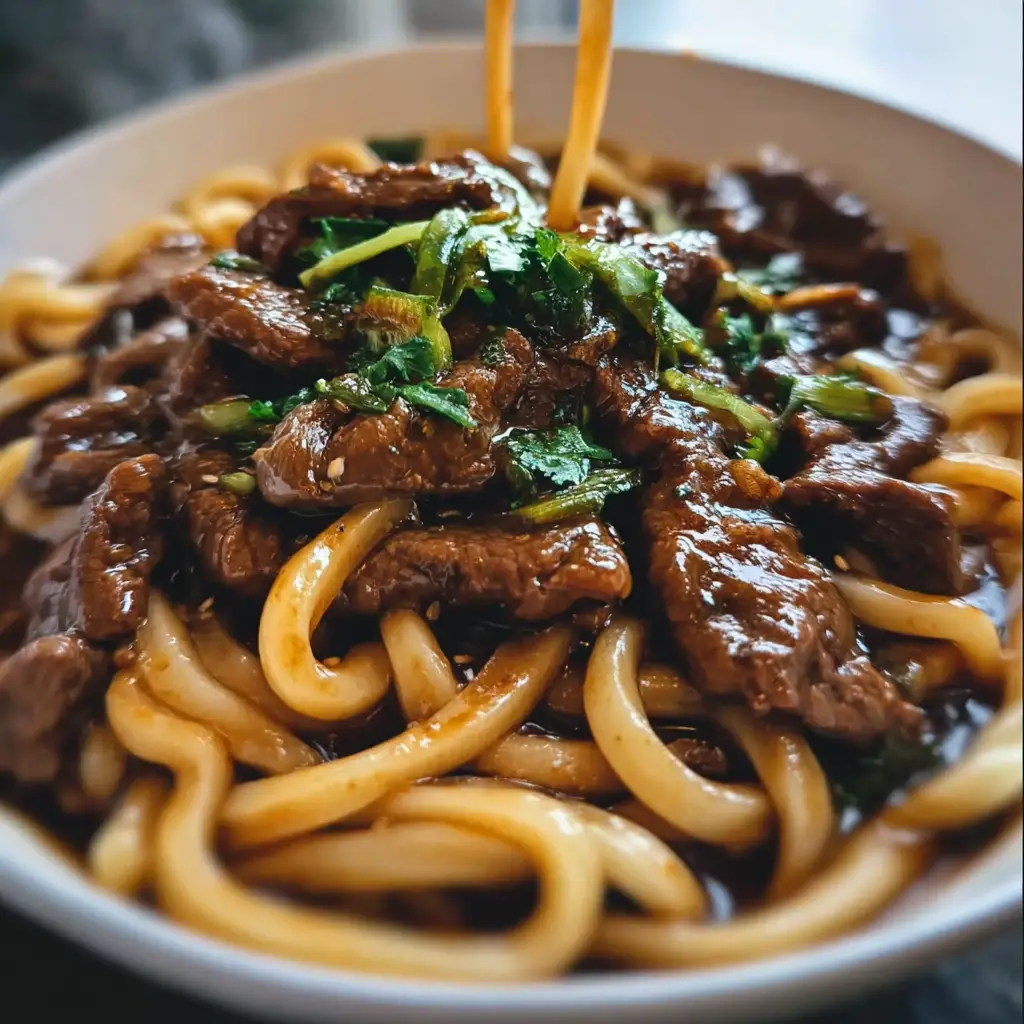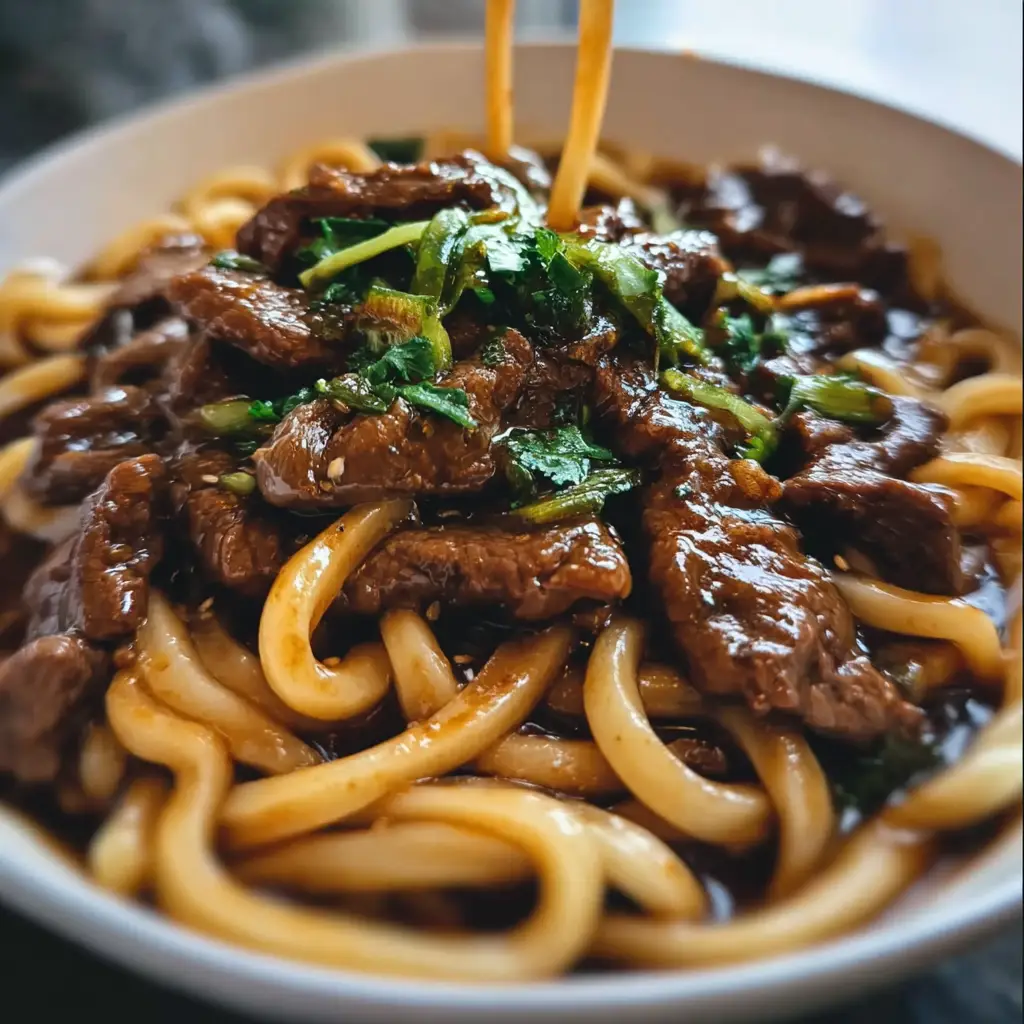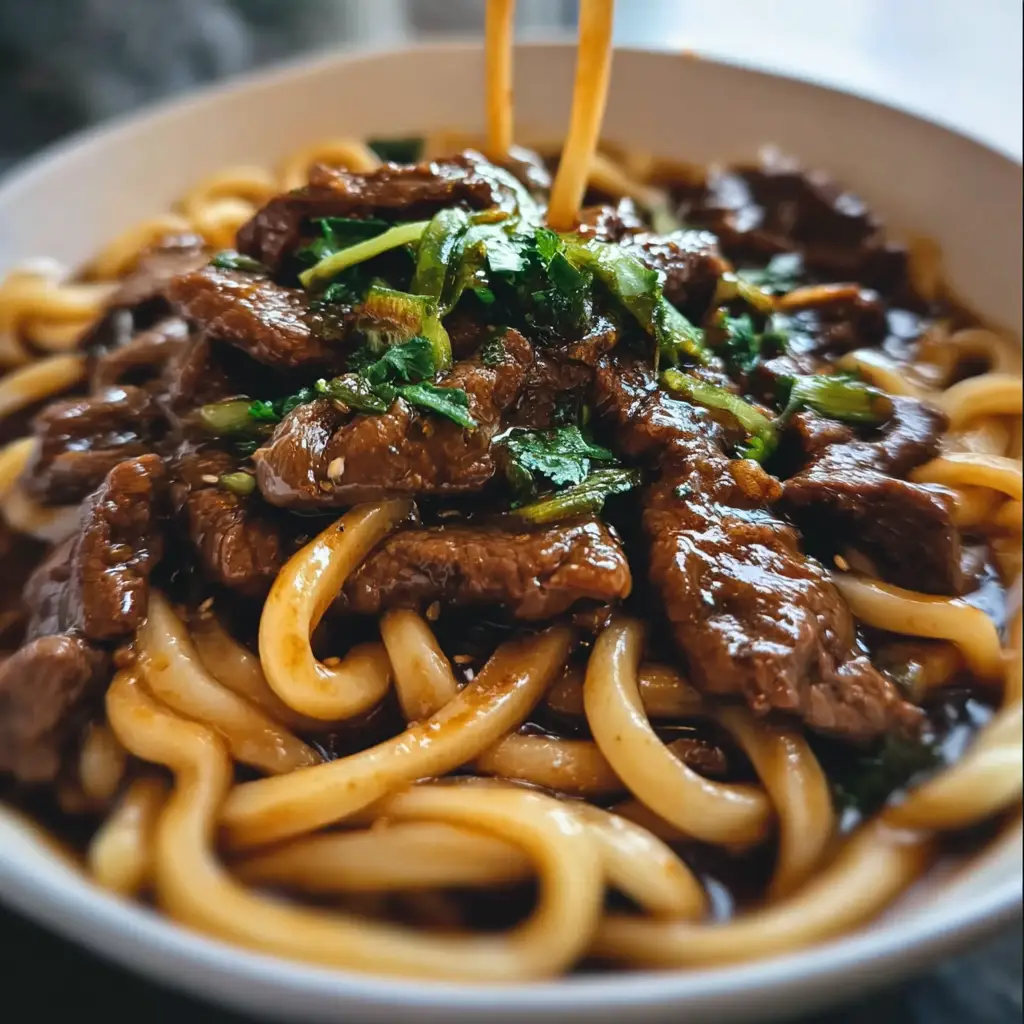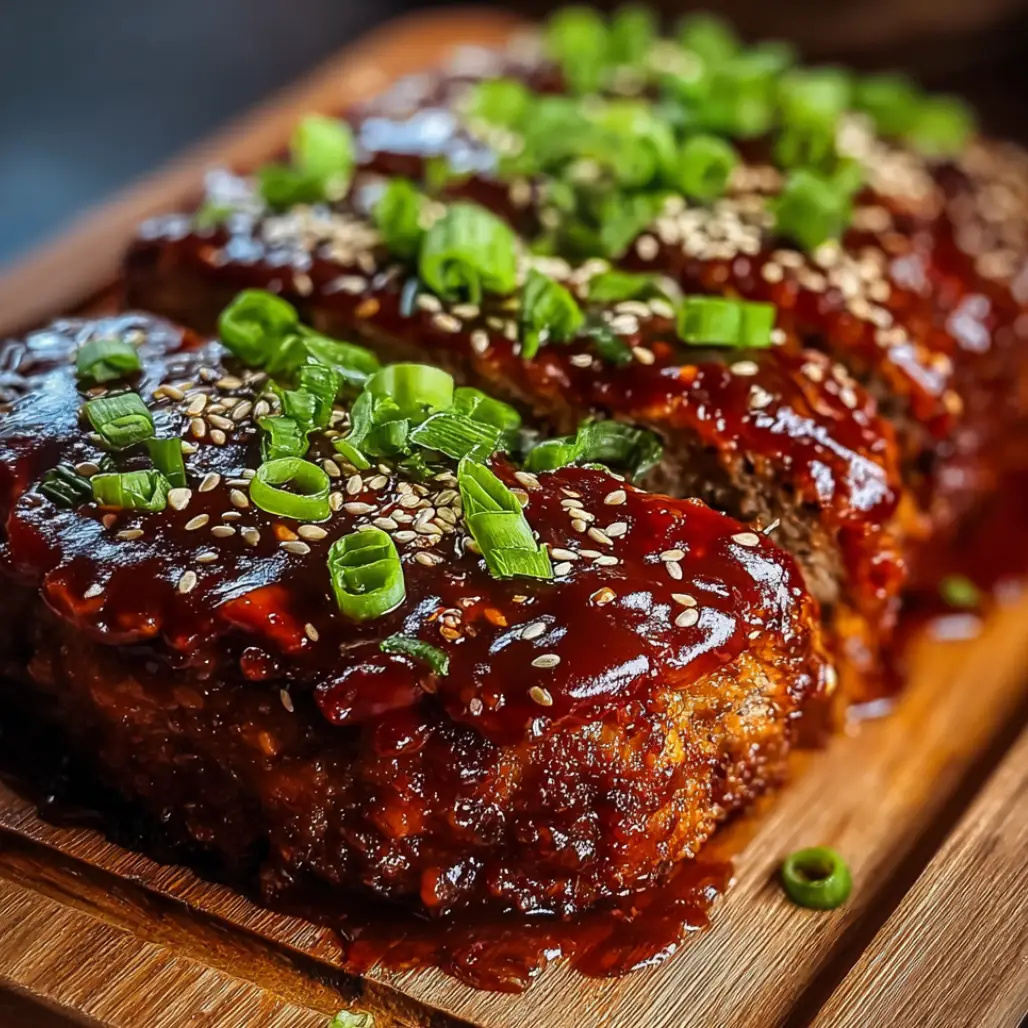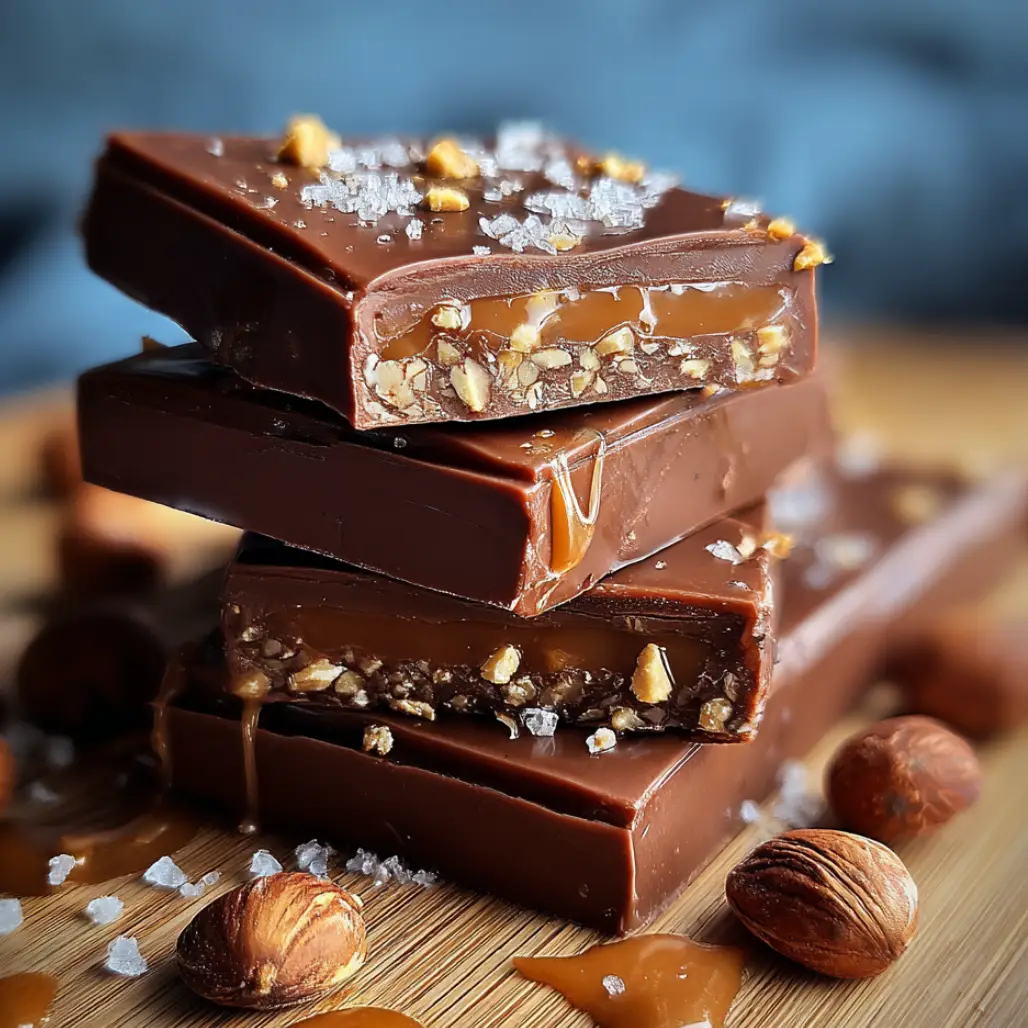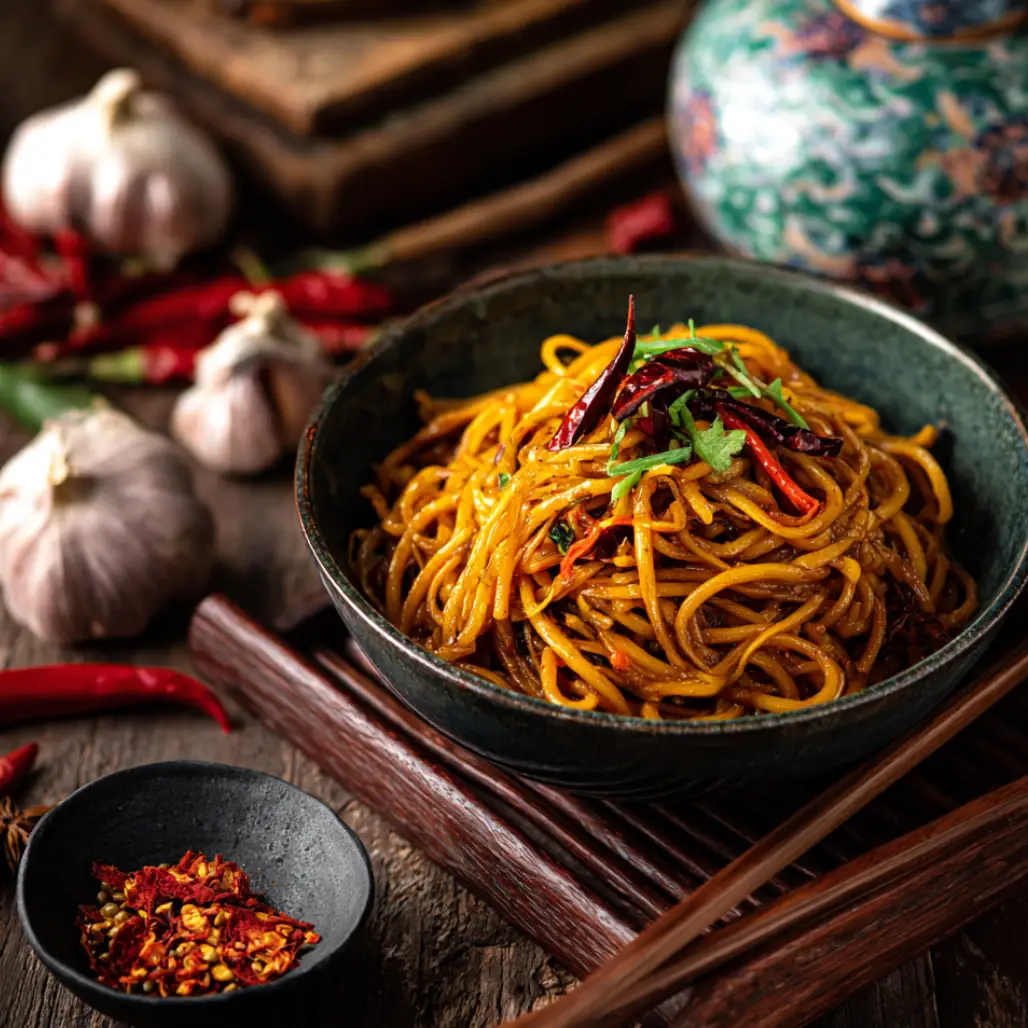| Prep Time | Cook Time | Total Time | Serves |
|---|---|---|---|
| 15 minutes | 10 minutes | 25 minutes | 4 |
Why This Black Pepper Udon Recipe Works
The exceptional success of this black pepper udon stems from the thoughtful balance of bold flavors and contrasting textures that work synergistically to create a dish that transcends ordinary stir-fried noodles because each component serves multiple purposes while contributing to the overall harmony that makes this black pepper udon so memorable. Fresh udon noodles provide the essential foundation because their thick, chewy texture offers the perfect vehicle for absorbing the rich, peppery sauce while maintaining their satisfying bite that distinguishes this dish from thinner noodle varieties.
The generous use of freshly ground black pepper creates the signature flavor profile because this warming spice delivers both heat and aromatic complexity that penetrates every element of the dish while providing the distinctive character that gives black pepper udon its name and reputation. Unlike pre-ground pepper that loses potency over time, freshly cracked peppercorns release volatile oils that create depth and intensity impossible to achieve with stale alternatives.
The sauce combination of dark soy sauce, oyster sauce, and complementary seasonings builds layers of umami because these fermented and concentrated ingredients provide the savory backbone that balances the pepper’s heat while creating the glossy coating that makes black pepper udon so visually appealing. Each sauce contributes unique characteristics that work together to create complexity far greater than any single flavoring agent could provide.
The high-heat stir-frying technique ensures optimal texture development because this cooking method creates the essential wok hei or breath of the wok that professional kitchens achieve while preventing the noodles from becoming mushy or overcooked. The rapid cooking also preserves the crisp-tender quality of vegetables while allowing flavors to meld without losing their individual characteristics.
This black pepper udon succeeds because it balances comfort and excitement through familiar cooking techniques applied to bold flavor combinations that challenge the palate while remaining approachable for home cooks of varying skill levels.
Essential Ingredients for Perfect Black Pepper Udon
For the Noodles:
- 2 packages fresh udon noodles (7-8 ounces each) or 12 ounces dried udon
- 2 tablespoons vegetable oil (for stir-frying)
For the Black Pepper Sauce:
- 3 tablespoons dark soy sauce (for color and depth)
- 2 tablespoons light soy sauce (for saltiness)
- 2 tablespoons oyster sauce (for umami richness)
- 1 tablespoon fish sauce (for depth)
- 1 teaspoon brown sugar (for balance)
- 2-3 tablespoons freshly ground black pepper (the star ingredient)
For the Stir-Fry:
- 4 cloves garlic (minced)
- 1 inch fresh ginger (minced)
- 1 medium onion (sliced)
- 1 bell pepper (sliced)
- 4 green onions (cut into 2-inch pieces)
- 1 cup mixed vegetables (broccoli, snap peas, or mushrooms)
Optional Protein:
- 8 ounces beef, chicken, or shrimp (sliced thin)
- 6 ounces firm tofu (cubed)
Creating exceptional black pepper udon requires selecting premium ingredients because the simplicity of this dish means that each component must contribute optimal flavor and texture to achieve the restaurant-quality results that make this recipe so special. Fresh or frozen udon noodles provide superior texture compared to dried varieties because their thick, bouncy consistency creates the satisfying chewiness that defines authentic black pepper udon experiences.
Freshly ground black pepper makes the critical difference because pre-ground pepper lacks the volatile oils and sharp bite that create the signature heat and aroma that gives this black pepper udon its distinctive character. High-quality soy sauces in both light and dark varieties contribute essential flavor complexity because these fermented seasonings provide the umami foundation while the dark variety adds the rich color that makes the dish visually appealing.
Fresh aromatics like garlic and ginger create the aromatic base because their pungent oils release during high-heat cooking to infuse the entire dish with depth and complexity that dried alternatives cannot match.
The Art of Creating Perfect Black Pepper Udon
Mastering the preparation of black pepper udon involves understanding how temperature control, timing, and ingredient sequencing affect the final texture and flavor because this knowledge allows you to create consistently excellent results while avoiding common mistakes that can compromise the dish’s signature characteristics. The process begins with proper mise en place because stir-frying happens quickly and requires all ingredients to be prepared and within easy reach before heating begins.
Noodle preparation technique significantly impacts the final result because udon noodles need specific handling to achieve the ideal texture that absorbs sauce while maintaining their characteristic bounce. Understanding the difference between fresh, frozen, and dried varieties allows you to adjust cooking times and techniques accordingly because each type requires different approaches to achieve optimal results.
Heat management throughout cooking ensures proper texture development because insufficient heat produces steamed rather than stir-fried results while excessive temperature can burn aromatics before noodles cook through properly. The goal is achieving wok hei or the distinctive smoky flavor that comes from high-heat cooking in well-seasoned cookware.
Sauce integration requires careful timing because adding liquid components too early can create soggy noodles while waiting too long prevents proper flavor absorption that makes black pepper udon so satisfying. Understanding when and how to add each sauce component ensures even distribution and optimal flavor development throughout the dish.
The pepper application technique affects both heat distribution and aromatic impact because timing and method of addition determine whether the spice provides background warmth or aggressive heat that defines the eating experience of this black pepper udon.
Step-by-Step Instructions for Black Pepper Udon
Preparing Your Ingredients and Equipment
Begin by gathering all ingredients and preparing them completely because stir-frying moves quickly and interrupting the process to chop vegetables or mix sauces will result in overcooked noodles and uneven heating. Set up your workspace with ingredients arranged in the order they’ll be added because this organization prevents confusion during the rapid cooking process that defines proper black pepper udon preparation.
Prepare the sauce mixture by combining dark soy sauce, light soy sauce, oyster sauce, fish sauce, brown sugar, and half the black pepper in a small bowl because having this mixture ready ensures even flavor distribution while preventing the burning that can occur when adding individual liquid ingredients to hot oil. Whisk thoroughly to dissolve the sugar and create a smooth consistency that will coat the noodles evenly.
Professional Tip: Crack fresh black pepper immediately before cooking because the volatile oils that provide the signature heat and aroma dissipate quickly once the peppercorns are broken, so timing this step correctly maximizes the flavor impact in your black pepper udon.
Key Points: Complete ingredient preparation prevents overcooking because stir-frying requires constant attention and movement, leaving no time for prep work once the cooking process begins.
Preparing the Udon Noodles
Bring a large pot of water to boiling and add the udon noodles because fresh varieties need only 1-2 minutes to loosen and heat through while frozen noodles require 2-3 minutes to thaw and separate properly. Use a fork or chopsticks to gently separate the noodle strands because forcing them apart can cause breaking that affects the final texture of your black pepper udon.
Drain the noodles immediately when they reach the proper consistency because overcooking at this stage will result in mushy noodles that cannot withstand the additional cooking during stir-frying. Rinse briefly with cool water to stop the cooking process and remove excess starch that could make the final dish gummy rather than having the clean, separate strands that characterize excellent black pepper udon.
Professional Tip: Slightly undercook the noodles at this stage because they will continue cooking during the stir-frying process, and starting with firm noodles ensures they maintain the proper chewy texture that makes black pepper udon so satisfying.
Key Points: Proper noodle preparation creates the foundation for success because overcooked or poorly drained noodles will never achieve the ideal texture regardless of how well the remaining steps are executed.
Creating the Aromatic Base
Heat a large wok or heavy skillet over high heat until it begins to smoke because this temperature creates the essential searing effect that develops complex flavors while preventing ingredients from steaming in their own moisture. Add the vegetable oil and swirl to coat the entire cooking surface because even oil distribution prevents sticking while ensuring uniform heat transfer throughout the cooking process.
Add the minced garlic and ginger to the hot oil and stir constantly for 15-20 seconds because these aromatics burn quickly at high temperatures but must cook long enough to release their essential oils that infuse the entire black pepper udon with depth and complexity. The mixture should become fragrant without developing brown color that indicates burning.
Professional Tip: Keep the aromatics moving constantly because high heat can turn garlic from perfectly golden to bitter and burnt in seconds, which would require starting over to avoid compromising the entire dish.
Key Points: Proper aromatic development creates the flavor foundation because these ingredients infuse the oil that will coat every component of the finished black pepper udon.
Building the Stir-Fry
Add the sliced onions to the aromatic oil and stir-fry for 1-2 minutes because onions need slightly longer cooking to develop sweetness while maintaining some texture that provides contrast in the finished black pepper udon. Follow with any firm vegetables like bell peppers, broccoli, or snap peas because these ingredients require more cooking time than softer additions.
If using protein, add it now and cook until just done because meat and seafood should be cooked through but not overcooked since they will continue cooking when returned to the pan later. Remove cooked protein and set aside because this prevents overcooking while allowing vegetables to cook properly without interference.
Professional Tip: Cook vegetables until they are crisp-tender because they will continue cooking when the noodles and sauce are added, and overcooked vegetables become mushy and lose their vibrant color and nutritional value.
Key Points: Proper vegetable cooking maintains texture and color because these visual and textural elements contribute significantly to the overall appeal of the finished black pepper udon.
Combining and Finishing
Add the prepared noodles to the hot vegetables and toss gently to combine because this distributes heat evenly while beginning the flavor integration process that makes black pepper udon cohesive rather than separate components. Pour the sauce mixture over the noodles and vegetables while tossing constantly because this ensures even coating while preventing the sauce from pooling in the bottom of the pan.
Add the remaining black pepper and any cooked protein back to the pan because this final addition provides the signature heat while reheating any proteins to serving temperature. Toss everything together for 30-60 seconds because this final mixing completes the flavor integration while heating all components to the proper serving temperature.
Professional Tip: Taste and adjust seasoning at the end because the cooking process can concentrate flavors while individual ingredients may vary in saltiness or intensity, requiring final adjustments to achieve perfect balance in your black pepper udon.
Key Points: Final seasoning adjustment ensures optimal flavor because this last step allows you to customize the dish to personal preferences while correcting any imbalances that developed during cooking.
Professional Tips for Perfect Black Pepper Udon
Temperature control throughout the cooking process determines success because insufficient heat produces steamed results lacking the characteristic wok hei while excessive temperature burns aromatics before other ingredients cook properly. Maintain high heat throughout most of the process because this rapid cooking preserves texture while developing the complex flavors that distinguish restaurant-quality black pepper udon from home versions.
Ingredient timing affects both texture and flavor development because adding components in the correct sequence allows each element to cook optimally while building layers of flavor that create complexity. Hard vegetables need more cooking time than soft varieties, while aromatics require brief cooking to prevent burning that would compromise the entire dish.
Fresh pepper timing maximizes impact because adding half the pepper during cooking allows it to bloom and develop while reserving some for final addition preserves the sharp bite that gives black pepper udon its signature character. This two-stage approach creates both depth and immediate impact that satisfies expectations for this boldly flavored dish.
Oil selection influences both flavor and cooking performance because neutral oils like vegetable or peanut oil allow ingredient flavors to shine while providing the high smoke point necessary for proper stir-frying. Avoid olive oil or other low smoke point fats because they burn at the temperatures required for authentic black pepper udon preparation.
Cookware choice affects heat distribution and cooking efficiency because well-seasoned woks or heavy skillets retain and distribute heat evenly while providing the surface area necessary for proper stir-frying technique. The right pan makes the difference between successful restaurant-style results and disappointing steamed vegetables with noodles.
Creative Variations of Black Pepper Udon
Transform your basic black pepper udon into exciting new variations by incorporating different proteins, vegetables, or flavor profiles because these adaptations allow you to customize the dish for various dietary preferences and seasonal availability while maintaining the essential characteristics that make this recipe so appealing. Beef black pepper udon intensifies the hearty character because thinly sliced flank steak or sirloin provides rich, meaty flavor that complements the pepper’s heat while creating a more substantial meal perfect for hungry diners.
Seafood black pepper udon offers elegant variation because shrimp, scallops, or squid cook quickly while providing delicate flavor that doesn’t compete with the pepper’s intensity. The key to success with seafood versions is avoiding overcooking because these proteins become tough when exposed to excessive heat or prolonged cooking times.
Vegetarian black pepper udon accommodates plant-based diets because firm tofu, mushrooms, or plant-based meat alternatives provide protein while absorbing the bold flavors that make this dish so satisfying. Extra vegetables like baby corn, water chestnuts, or bamboo shoots add textural interest while maintaining the authentic character of the original recipe.
Spicy black pepper udon appeals to heat lovers because adding fresh chilies, chili oil, or red pepper flakes creates multiple layers of heat that complement rather than compete with the black pepper’s warming character. Balance is crucial because too much heat can overwhelm other flavors that contribute to the dish’s complexity.
Singapore-style black pepper udon incorporates curry powder and additional aromatics because this regional variation adds golden color and complex spicing that creates an entirely different flavor profile while maintaining the pepper-forward character that defines the dish.
Saucy black pepper udon increases the liquid component because some diners prefer more sauce to coat the noodles thoroughly while others enjoy the concentrated flavor that comes from minimal sauce that clings to ingredients without pooling.
Perfect Pairing Ideas for Black Pepper Udon
The bold, peppery character of black pepper udon makes it an ideal centerpiece for Asian-inspired meals because its intense flavors pair beautifully with complementary dishes that provide cooling contrast or harmonious spice levels while creating complete dining experiences. Light, refreshing side dishes balance the heat because crisp vegetables or mild preparations provide palate relief between bites of the intensely flavored noodles.
Cucumber salad with rice vinegar dressing offers cooling contrast because the crisp texture and acidic flavor cut through the rich, oily noodles while providing refreshing relief from the pepper’s heat. Simple steamed vegetables like bok choy or Chinese broccoli complement without competing because their mild flavors allow the black pepper udon to remain the star while adding nutritional variety to the meal.
For those interested in creating complete Asian-inspired dining experiences, consider exploring the fresh salad collection at Tasty Middles because these recipes offer complementary flavors and cooling elements that would balance the intense heat of black pepper udon while providing textural contrast.
Cold beverages provide essential relief from the pepper’s intensity because the heat builds with each bite, making cooling drinks not just enjoyable but necessary for most diners. Green tea offers traditional pairing because its subtle bitterness and cooling properties balance the warming spices while cleansing the palate between bites.
Light soups served as starters prepare the palate because they provide gentle warmth without competing with the main dish’s bold flavors while offering an opportunity to showcase additional Asian flavors that complement the meal’s theme. Miso soup or clear broth with minimal garnishes work particularly well because they warm without overwhelming.
For those looking to expand their Asian cuisine repertoire with complementary dishes, the perfect sides collection at Tasty Middles provides numerous options that would create cohesive meal experiences while offering variety in preparation methods and flavor profiles.
Discover More Exceptional Noodle Dishes and Asian Inspirations
Expanding your noodle repertoire beyond black pepper udon opens up exciting possibilities for exploring Asian cuisine because understanding the principles that make this dish successful allows you to apply similar techniques to other noodle varieties and flavor combinations while developing confidence with high-heat cooking methods. The art of stir-frying translates across numerous preparations because mastering heat control, timing, and ingredient sequencing provides the foundation for countless Asian noodle dishes that share similar cooking approaches.
Regional variations of pepper-based noodle dishes offer inspiration for creative adaptation because different Asian cuisines have developed unique approaches to combining noodles with bold spicing that can inform new recipe development. Singaporean mei fun, Malaysian char kway teow, and Thai pad see ew all demonstrate different approaches to creating satisfying noodle dishes with distinctive flavor profiles.
Understanding sauce building principles allows confident experimentation because the balance of salty, sweet, umami, and aromatic elements that makes black pepper udon successful applies to numerous other preparations. Learning to adjust these components based on personal preference or available ingredients empowers creative cooking that goes beyond following recipes exactly.
For those interested in exploring sophisticated flavor combinations and advanced cooking techniques, the expertly crafted collection at Solush Recipes demonstrates how traditional ingredients can be combined in innovative ways that create complex flavors while maintaining accessibility for home preparation.
Seasonal adaptation keeps your noodle cooking fresh and exciting because different times of year offer unique vegetables and proteins that can transform basic techniques into distinctive creations. Spring vegetables like asparagus and peas bring freshness, while autumn ingredients like squash and mushrooms provide earthiness that complements peppery heat.
The science of noodle cooking extends beyond this black pepper udon because understanding how different wheat varieties, shapes, and preparation methods affect texture and sauce absorption allows you to choose optimal noodles for specific applications while achieving consistently excellent results.
Proper Storage Guidelines for Black Pepper Udon
Understanding proper storage techniques for black pepper udon ensures that you can enjoy leftovers safely while maintaining as much quality as possible because the combination of noodles and sauce requires specific handling to prevent deterioration and food safety issues. Freshly cooked black pepper udon maintains peak quality for immediate consumption because the contrast between hot noodles and room temperature ingredients creates the ideal eating experience that diminishes over time.
Short-term storage at room temperature should not exceed two hours because cooked noodles and vegetables provide ideal conditions for bacterial growth while the sauce components may separate or develop off-flavors when held at ambient temperatures. Refrigeration becomes necessary for any storage beyond immediate serving because food safety considerations require keeping cooked ingredients below 40°F to prevent spoilage.
Refrigerated storage in airtight containers preserves quality for up to three days because proper sealing prevents moisture loss that would make noodles dry and hard while protecting against refrigerator odors that could affect flavor. Separate storage of components when possible maintains better texture because noodles continue absorbing sauce during storage, potentially becoming mushy or overly salty.
Reheating techniques significantly impact quality because improper methods can create disappointing textures that bear little resemblance to the original dish. Stir-frying leftover black pepper udon in a hot pan with a small amount of oil provides the best results because this method refreshes the texture while reheating evenly without creating sogginess.
Microwave reheating should be approached carefully because this method can create uneven heating while making noodles rubbery or dried out. If using a microwave, add a tablespoon of water and cover the container because steam helps prevent drying while promoting even heating throughout the dish.
Freezing is not recommended for prepared black pepper udon because the texture of cooked noodles deteriorates significantly during the freezing and thawing process, creating disappointing results that don’t justify the storage convenience. Fresh ingredients should be used for optimal results rather than attempting to preserve prepared dishes long-term.
The Science Behind Black Pepper Udon’s Irresistible Appeal
The remarkable appeal of black pepper udon stems from complex chemical and sensory interactions that occur when heat-activated compounds combine with umami-rich ingredients because scientific understanding of these processes helps explain why this particular combination creates such satisfying and memorable eating experiences. Piperine, the alkaloid compound responsible for black pepper’s heat, creates a warming sensation that differs from capsaicin found in chili peppers because it affects different receptors while providing aromatic complexity through volatile oil release.
The Maillard reactions that occur during high-heat stir-frying create hundreds of new flavor compounds because the interaction between proteins and sugars at elevated temperatures produces the complex, savory notes that distinguish restaurant-quality black pepper udon from home-cooked versions that lack proper heat application. These reactions also create the appealing brown colors that make the dish visually enticing.
Umami enhancement through fermented ingredients like soy sauce and oyster sauce activates specific taste receptors because these glutamate-rich components trigger savory satisfaction that makes the dish intensely satisfying while encouraging continued consumption. The layering of different umami sources creates depth that single-source preparations cannot achieve.
Texture contrast affects eating satisfaction because the human palate responds positively to varied mouthfeel experiences within single dishes. The chewy resistance of properly cooked udon noodles against tender vegetables and silky sauce creates engaging textural interplay that keeps the eating experience interesting throughout the meal.
Temperature impact on flavor perception explains why black pepper udon must be served hot because heat volatilizes aromatic compounds while affecting taste bud sensitivity in ways that enhance flavor intensity. Cold or lukewarm versions lack the aromatic impact and taste intensity that make this dish so compelling when properly prepared.
Fat-soluble compound extraction through oil-based cooking methods captures and concentrates flavors because many aromatic molecules dissolve better in fats than water, explaining why stir-frying creates more intense flavors than steaming or boiling similar ingredients.
Troubleshooting Common Black Pepper Udon Issues
Creating perfect black pepper udon requires understanding common problems and their solutions because even experienced cooks encounter challenges that can affect both texture and flavor of this technique-dependent dish. Mushy or overcooked noodles typically result from excessive boiling time or insufficient heat during stir-frying because udon requires careful timing to maintain its characteristic chewy texture that distinguishes this dish from ordinary noodle preparations.
If noodles become too soft, reduce initial cooking time and increase stir-frying heat because these adjustments help preserve texture while ensuring proper heating throughout. Fresh noodles require minimal pre-cooking while frozen varieties need just enough time to thaw and separate without becoming waterlogged.
Insufficient pepper heat usually indicates using pre-ground pepper or adding all seasoning during cooking because freshly cracked pepper provides more intense heat while reserving some for final addition maintains sharp bite that gives black pepper udon its signature character. Always crack pepper immediately before use because volatile oils dissipate quickly once peppercorns are broken.
Bland or under-seasoned results often stem from inadequate sauce quantities or poor mixing because the intense flavors require generous seasoning while thorough tossing ensures even distribution throughout all components. Taste and adjust seasoning at the end because cooking concentrates flavors while individual ingredients vary in intensity.
Soggy vegetables indicate cooking at insufficient heat or adding ingredients in wrong sequence because proper stir-frying requires high temperatures while delicate items need shorter cooking times than sturdy components. Maintain maximum heat throughout most of the process because this prevents steaming that creates disappointing textures.
Burnt aromatics result from inadequate heat control or leaving garlic and ginger unattended because these ingredients burn quickly at high temperatures but must cook long enough to release essential oils. Keep aromatics moving constantly while monitoring heat levels because burned garlic creates bitter flavors that compromise the entire dish.
Sauce separation or pooling suggests insufficient mixing or adding liquids too quickly because proper integration requires constant tossing while gradual addition allows better absorption. Add sauce in steady stream while maintaining continuous motion because this technique ensures even coating rather than puddles that don’t penetrate ingredients properly.
Additional Inspirations for Exceptional Asian Cooking
The principles that make black pepper udon so successful can inspire broader exploration of Asian stir-frying techniques because understanding how heat, timing, and ingredient interaction work together opens up countless possibilities for creating restaurant-quality dishes that showcase bold flavors and satisfying textures. Traditional wok cooking encompasses numerous preparations that share similar approaches while offering different flavor profiles and ingredient combinations.
Regional pepper-forward dishes from across Asia demonstrate various approaches to incorporating warming spices because different cultures have developed unique methods for balancing heat with other flavors while creating signature dishes that reflect local preferences and available ingredients. Malaysian black pepper crab, Sichuan peppercorn preparations, and Indonesian sambal-based dishes all offer inspiration for creative adaptation.
Understanding spice layering techniques allows confident flavor building because the successful integration of multiple heating agents requires knowledge of how different compounds interact while timing their addition to achieve desired intensity without overwhelming other components. This knowledge applies to numerous preparations beyond noodle dishes.
For those interested in exploring sophisticated entertaining concepts and advanced preparation techniques, the comprehensive collection at Solush Recipes demonstrates how traditional Asian sides can complement bold main dishes while providing balanced meal experiences that showcase cultural authenticity.
Protein variation techniques expand the versatility of basic stir-frying methods because different proteins require specific handling to achieve optimal texture while absorbing flavors effectively. Learning to adjust cooking times and temperatures for various proteins enables confident adaptation of recipes to available ingredients or dietary preferences.
Seasonal ingredient incorporation keeps Asian cooking fresh and relevant because traditional preparations often emphasize seasonal produce while demonstrating how to highlight natural flavors through proper cooking techniques rather than masking them with excessive seasoning.
For those looking to expand their Asian cuisine repertoire with complementary beverage options, the refreshing collection at Solush Recipes offers numerous ideas for creating drinks that balance spicy foods while enhancing rather than competing with complex flavors.
Conclusion
This comprehensive exploration of black pepper udon demonstrates how traditional Asian cooking techniques can be successfully adapted for home kitchens while maintaining the authentic flavors and textures that make this dish so beloved in restaurants throughout Asia because the combination of proper ingredient selection, technique mastery, and timing creates results that rival professional preparations. The beauty of this black pepper udon lies not only in its bold, satisfying flavors but also in its accessibility because once you understand the fundamental principles of high-heat stir-frying and ingredient sequencing, countless variations become possible while maintaining the essential character that defines this classic dish.
Understanding the balance between heat, umami, and texture empowers confident recipe modification because knowledge of how different components interact allows cooks to experiment with variations while achieving consistently excellent outcomes that satisfy both traditional expectations and personal preferences. The techniques demonstrated in this black pepper udon apply to numerous other Asian noodle dishes because mastering temperature control, sauce building, and timing provides the foundation for successful stir-frying across many different ingredient combinations and regional styles.
Regular practice with this black pepper udon will develop your high-heat cooking skills and Asian flavor intuition because repeated preparation builds muscle memory while teaching you to recognize proper texture, optimal timing, and ideal seasoning levels that distinguish exceptional homemade Asian food from ordinary attempts. The investment in quality ingredients and proper technique pays dividends in satisfaction because premium noodles, fresh aromatics, and careful attention to detail create memorable meals that demonstrate the transformative power of understanding traditional cooking methods.
Whether you’re seeking a quick weeknight dinner solution, exploring Asian cuisine for the first time, or wanting to add authentic flavors to your regular cooking rotation, this black pepper udon provides the perfect introduction to serious stir-frying because it combines approachable techniques with impressive results that showcase how simple ingredients can be transformed into extraordinary experiences through proper execution and understanding of fundamental cooking principles. The skills and knowledge gained from mastering this recipe will serve as stepping stones to more advanced Asian cooking because understanding heat control, flavor balance, and texture development creates the foundation for lifelong exploration and enjoyment of one of the world’s most sophisticated and satisfying culinary traditions.

